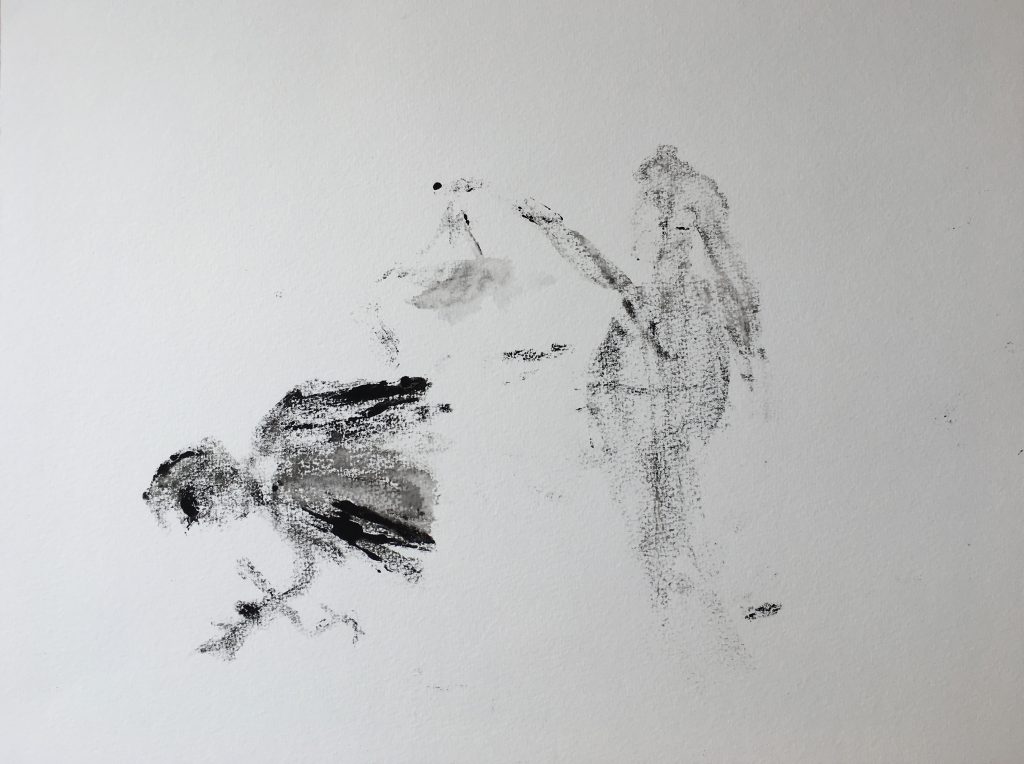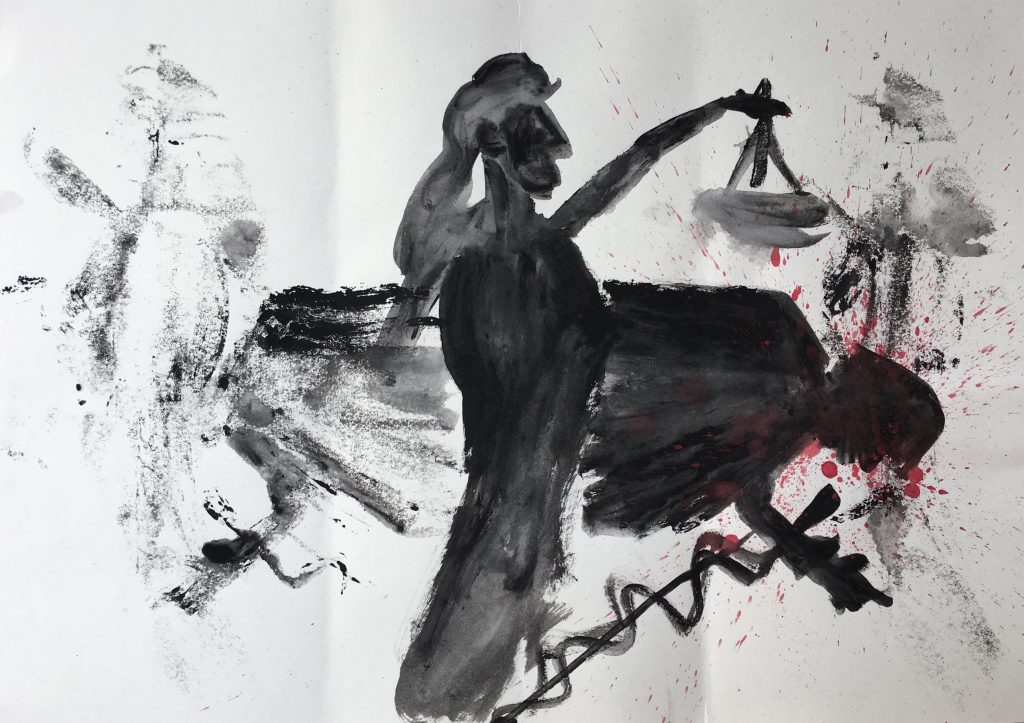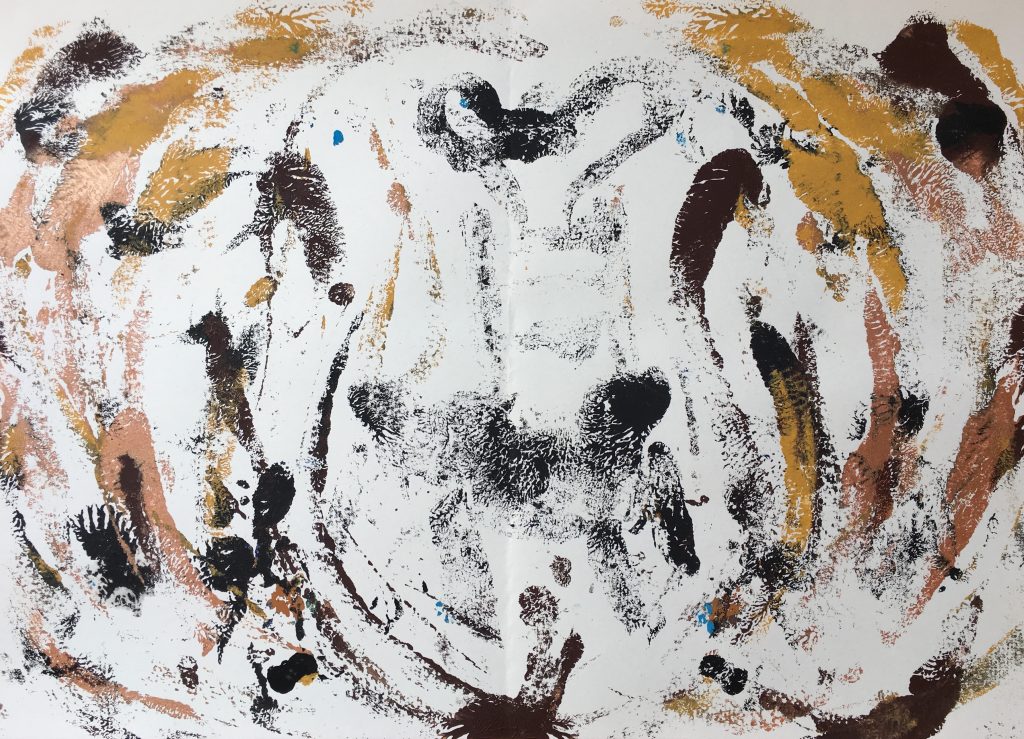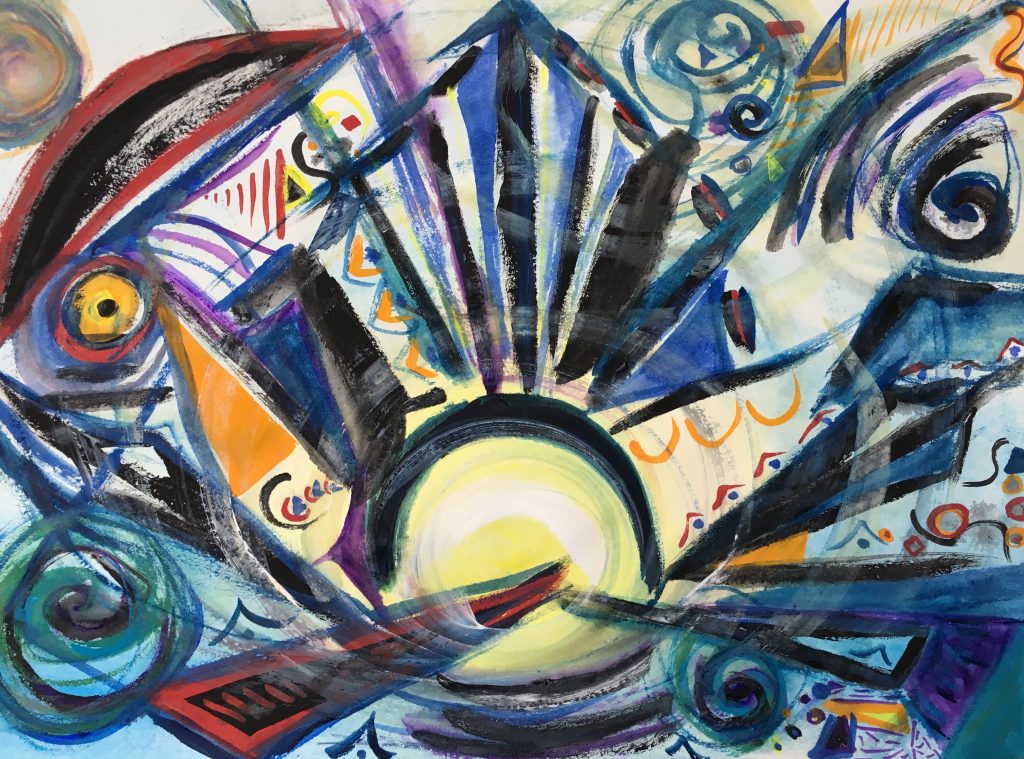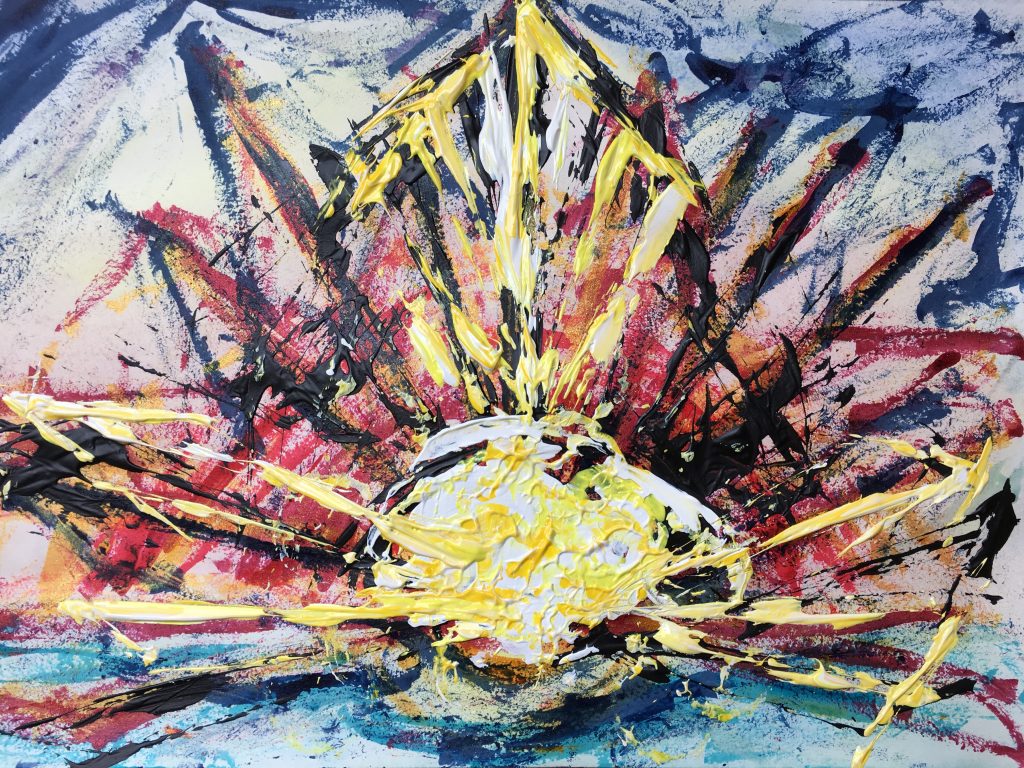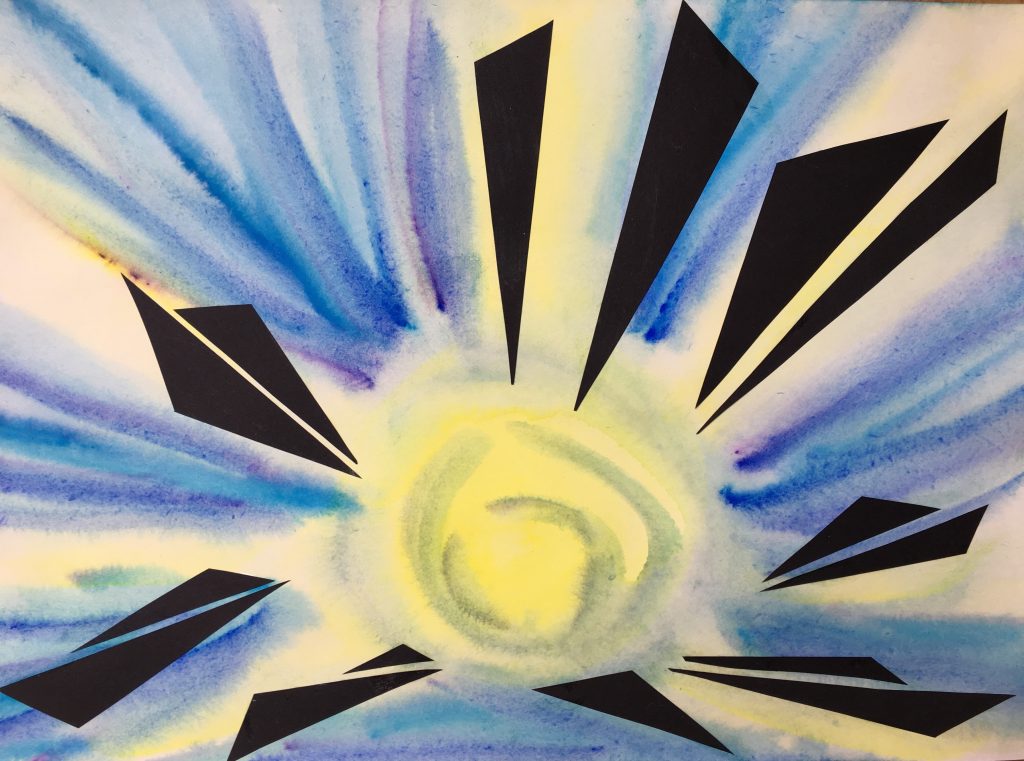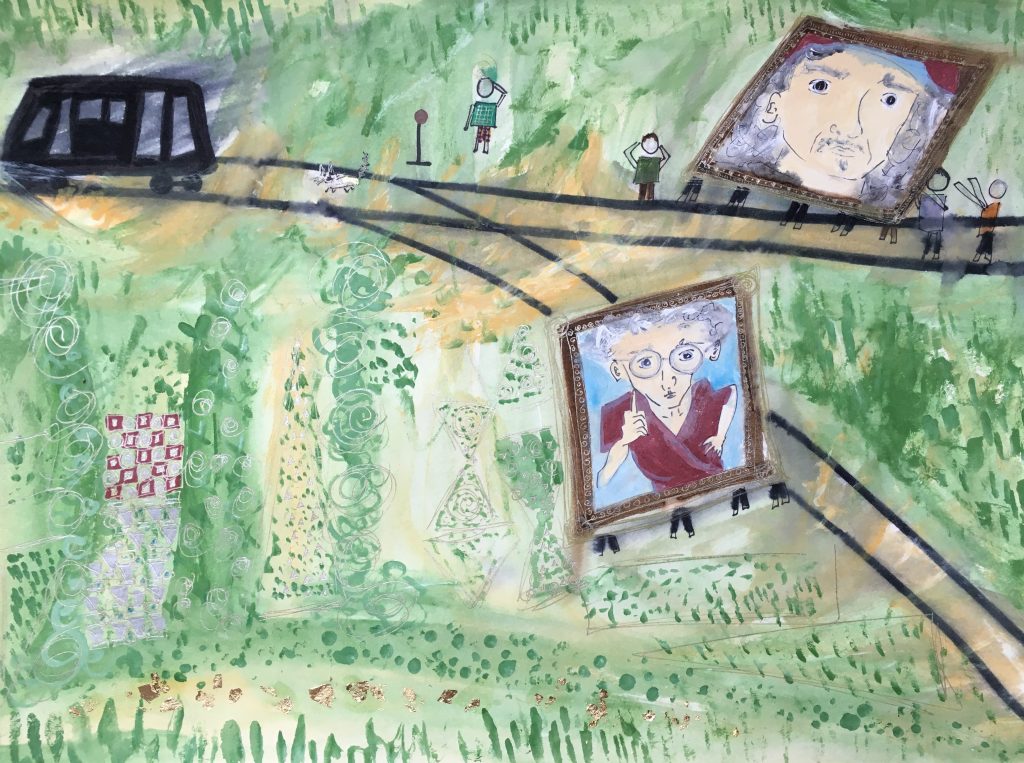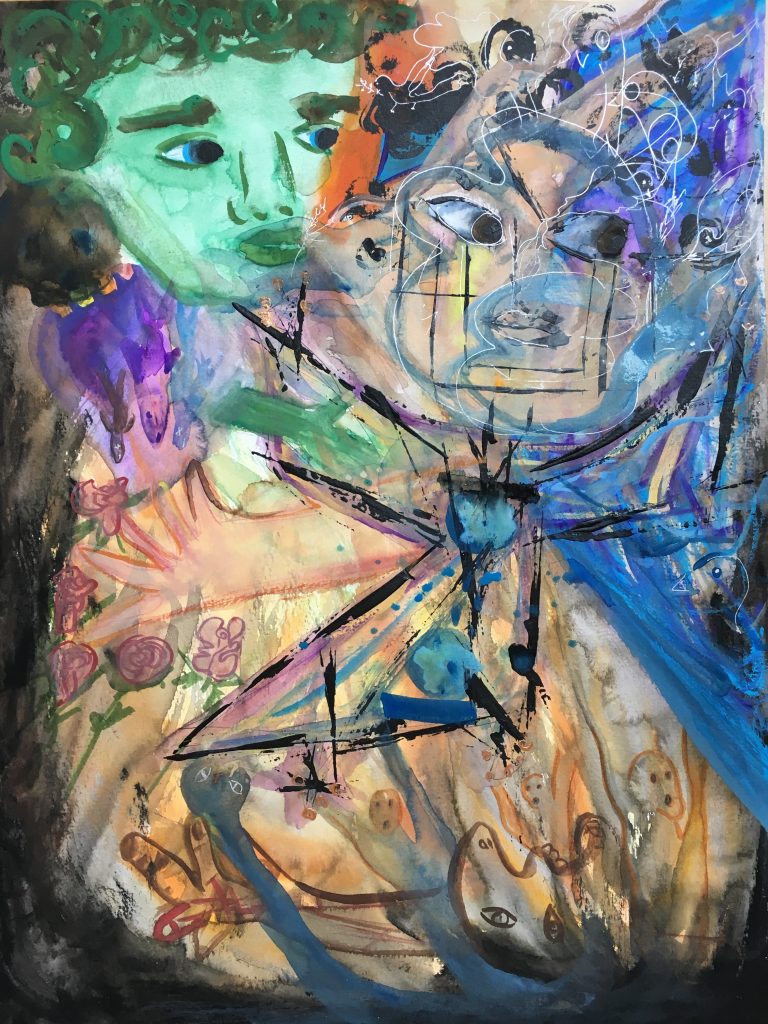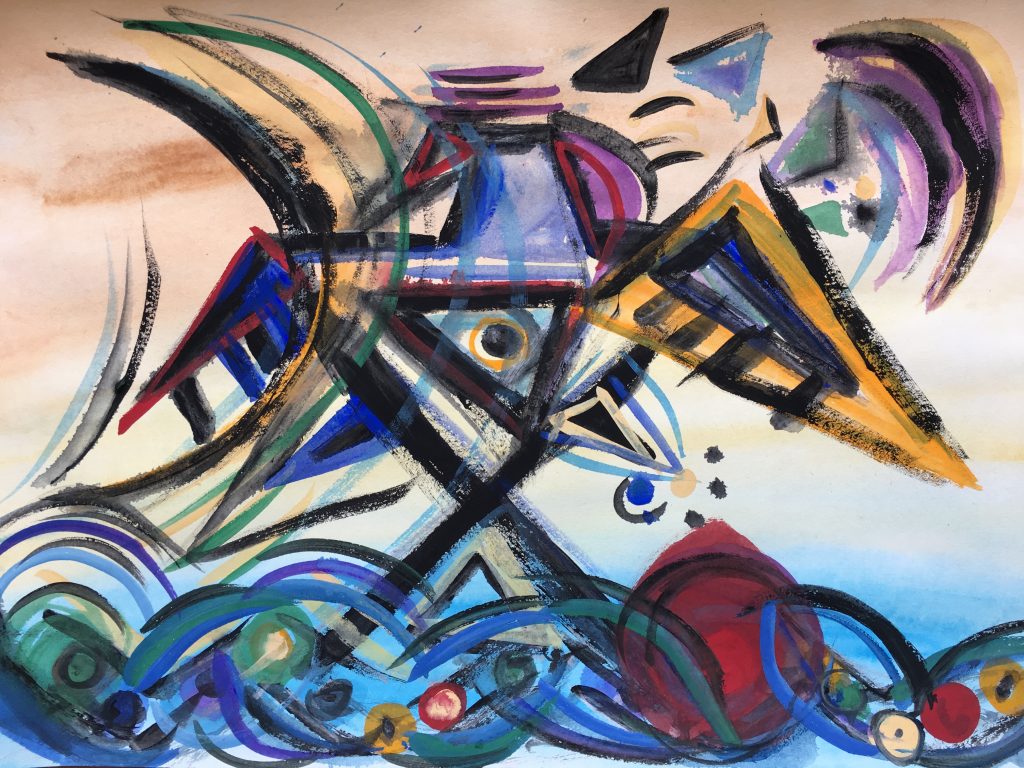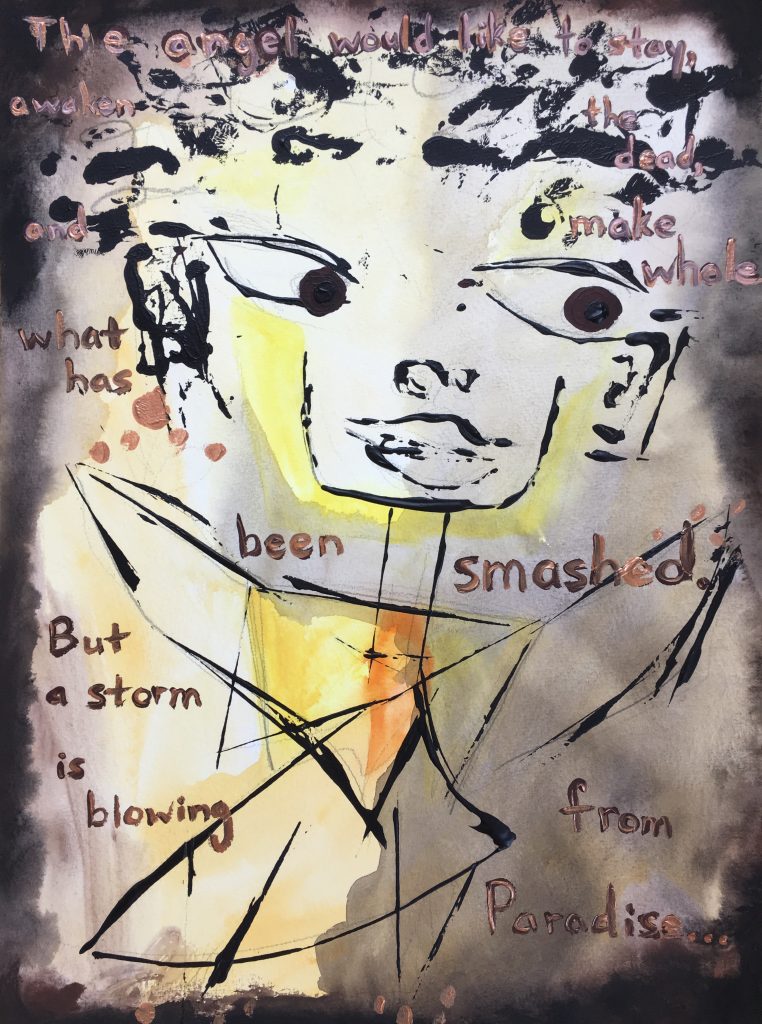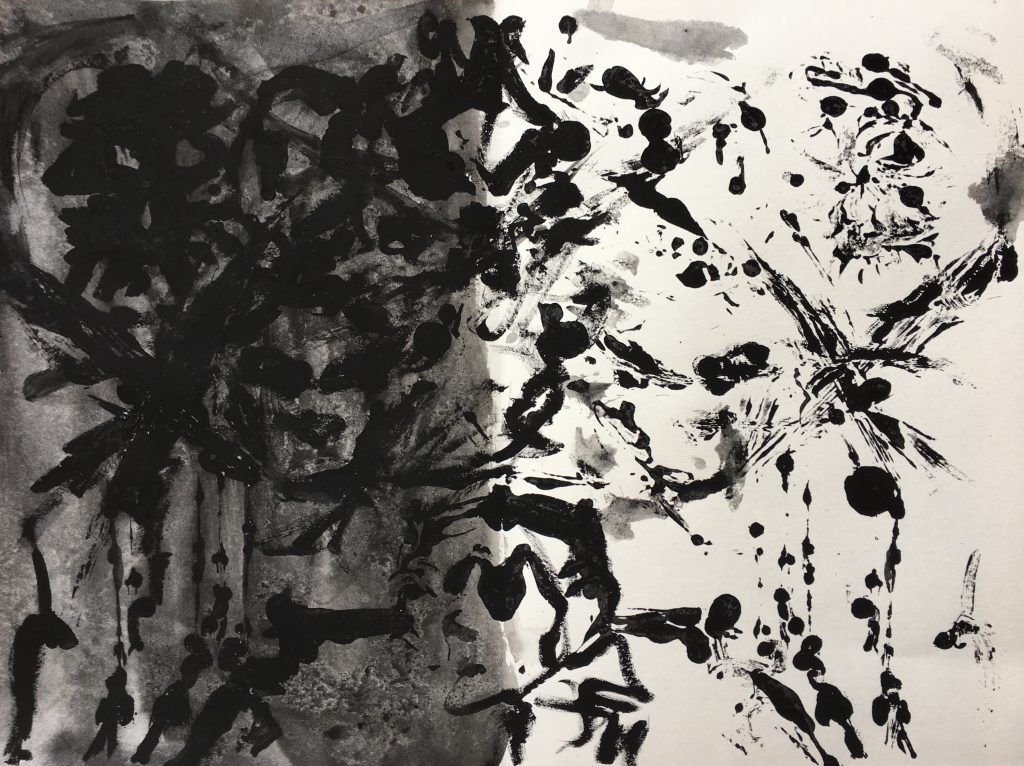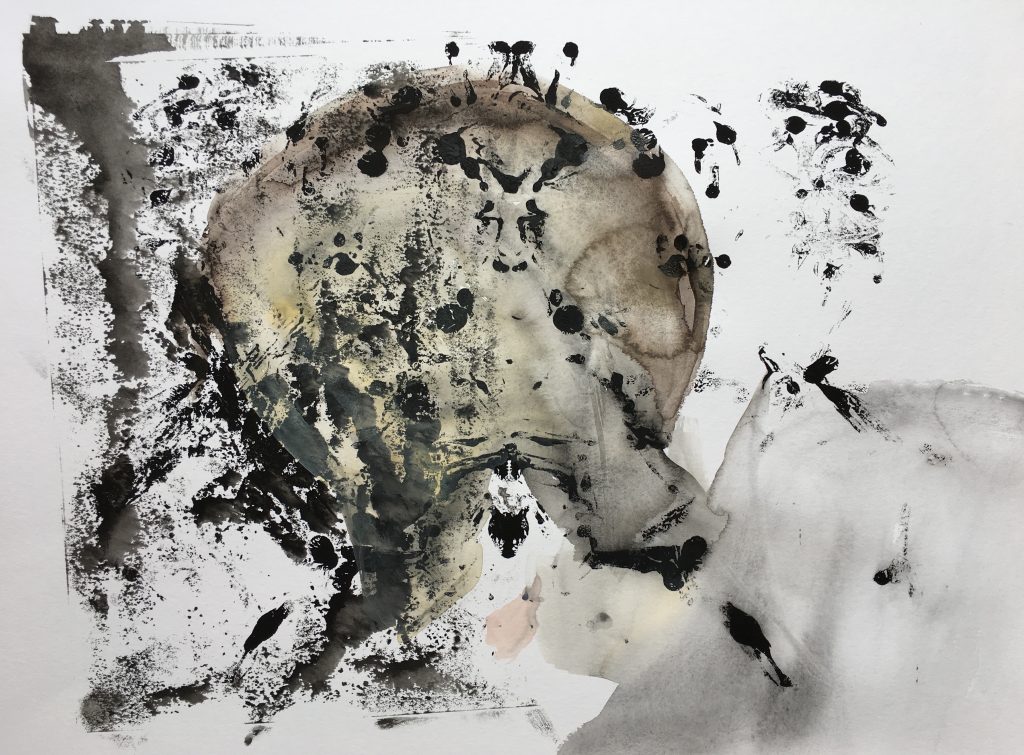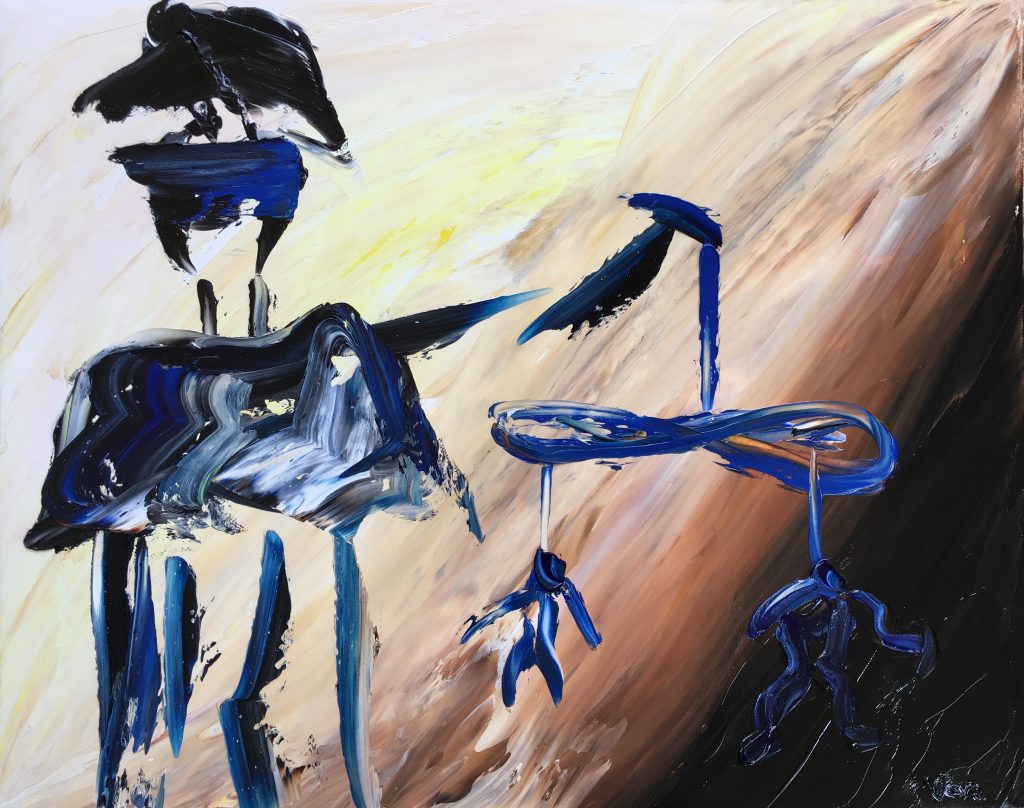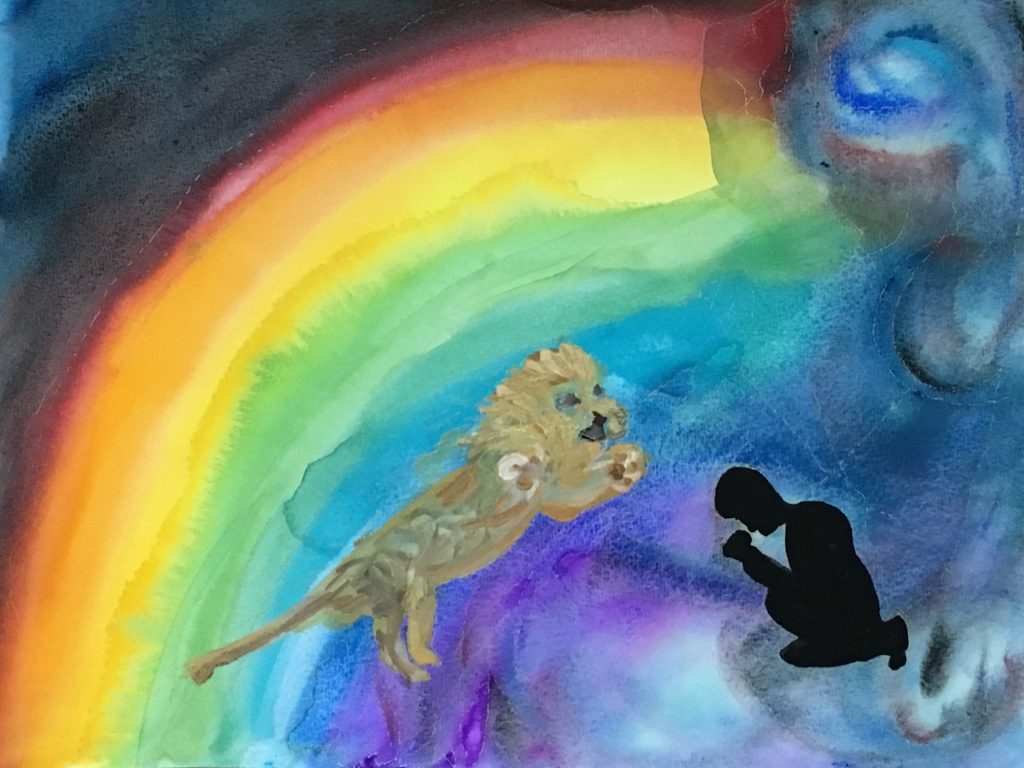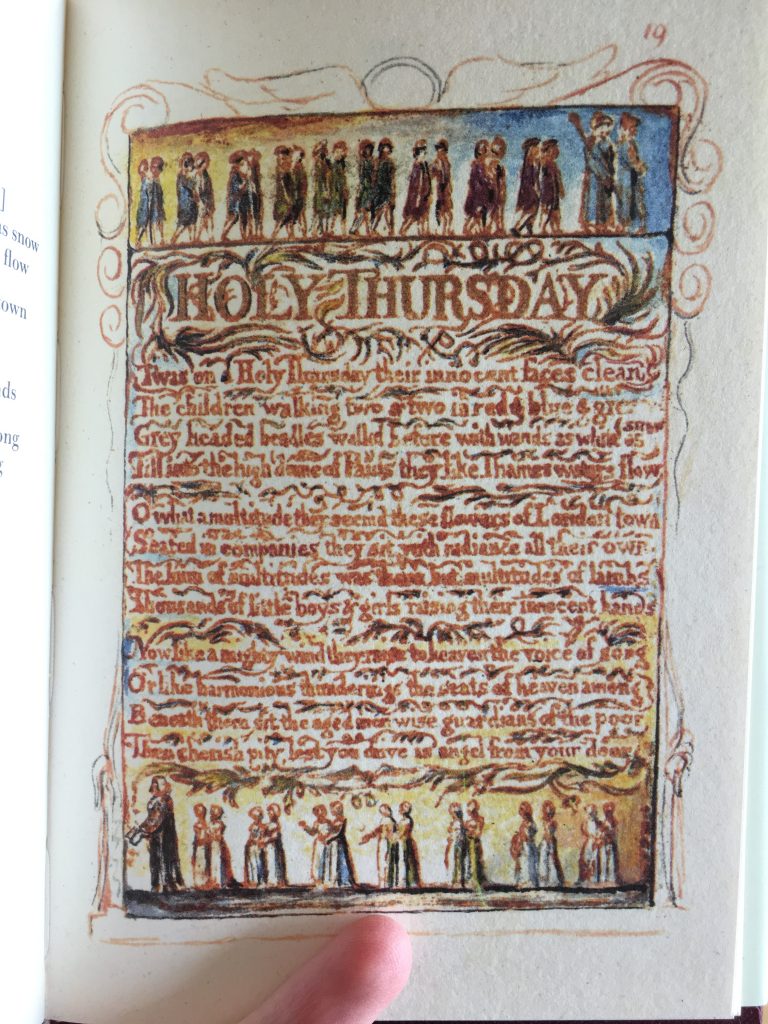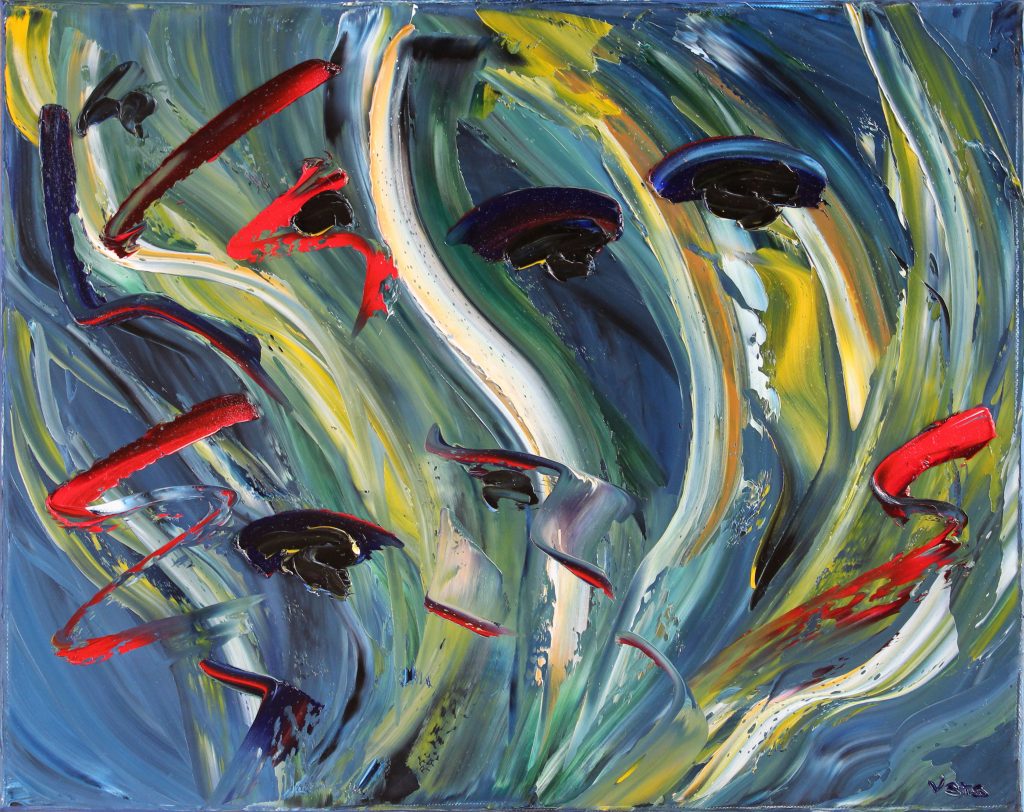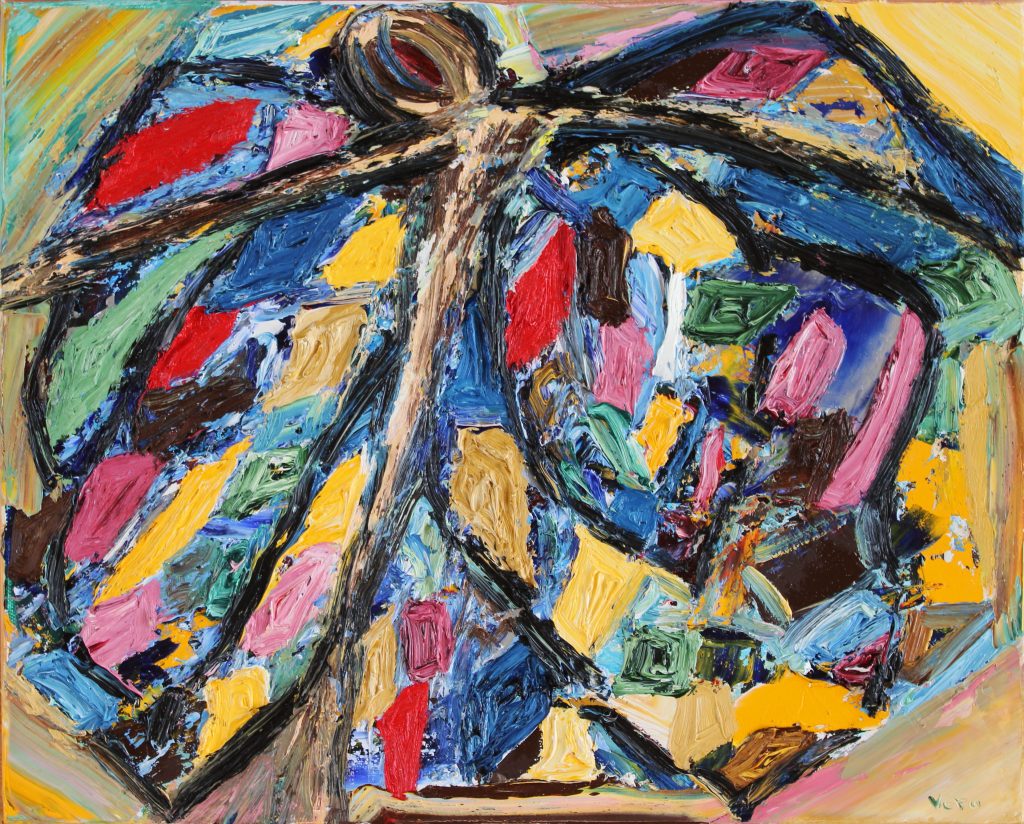In my ongoing Nuremberg: 2027 series on future war crimes trials.
Gouache on 36 x 48 cm paper.
Is it legal for art to threaten the President, CEOs, and other political and social figureheads? Yep (h/t Artsy). But should it? How is an imagining of future war crimes trials different from a threat? In what contexts are ideas really so dangerous that an imagining or preaching alone—like the radical Islamic preaching of American citizen Anwar al-Awlaki, whom then-President Obama ordered drone-assassinated without due process—could be correctly construed as a threat? And are some of these questions (and perhaps then this whole art series) moot or misguided? Are the more important lenses of foci, as Picasso’s “Guernica” suggests, the victims rather than the perpetrators of war crimes? How then to represent (celebrate, mourn, call for valuation of) recent and future hypothetical climate change/militarism/inequality victims, and their avoidable suffering?
Gouache on A3 paper.
“Epitaph for Climate Change Deniers”
This is the spot
where Trump
was shot.
The Kochs got away.
What did you expect?
Another day,
we’re trying
Exxon’s chief exec.
Til then we’re in a slump.
Done with spectacular lying.
And firings where no one is crying.
Black milk of morning, Paris—
he did his best to embarrass
all the world into climate action,
got an equal but opposite reaction.
Tens of millions dead,
hundreds displaced.
Chopped off his own head,
clan and country disgraced.
Gouache and acrylic on A3 paper.
“You Who Knew”
You who knew that it was getting hotter
and denied the science, watching rising water
from the comfort of a beach you’d sold
knowing its next house would never get old—
when we are standing on a level shore,
you will answer for your crimes—no less, and no more.
When tens of millions die and hundreds are displaced,
the world know your face and name—disgraced.
Trials will just be the beginning
when you’re no longer winning.
Every bit of oil and gas
will be publicly owned, along with your ass.
After your arrest,
the world can be distressed
about more important things
than how many a CEO hangs.
Gouache and acrylic on36 x 48 cm paper.
